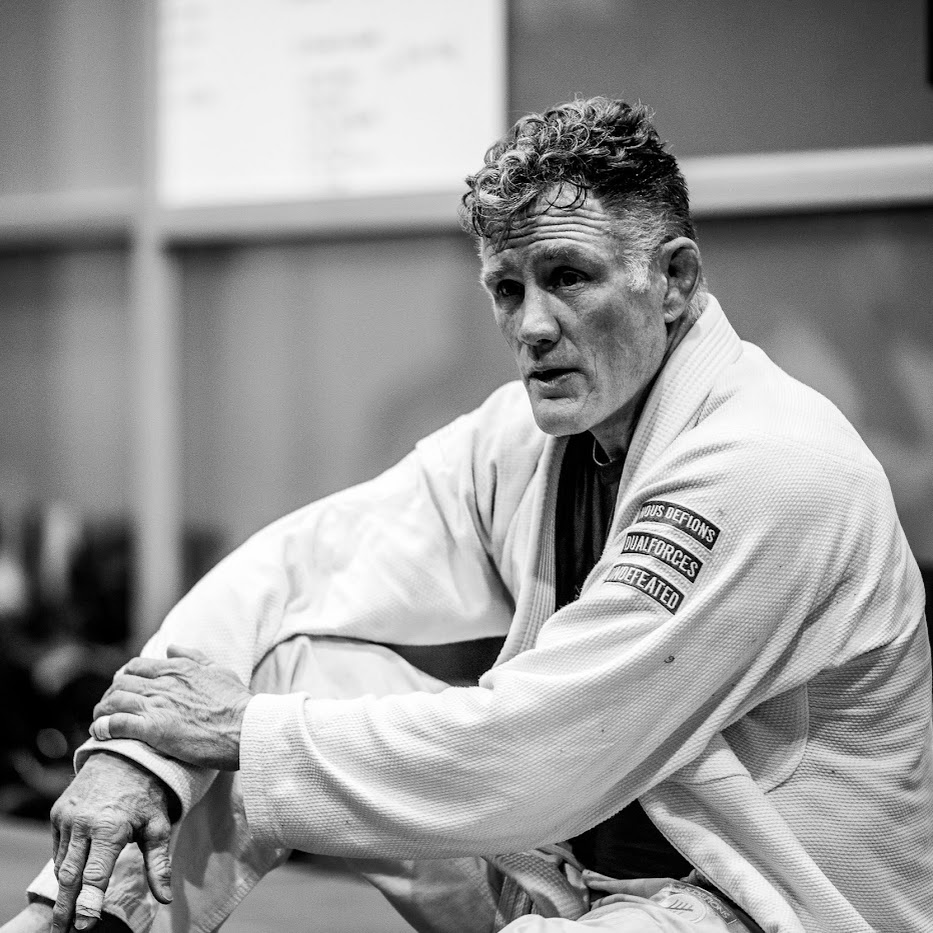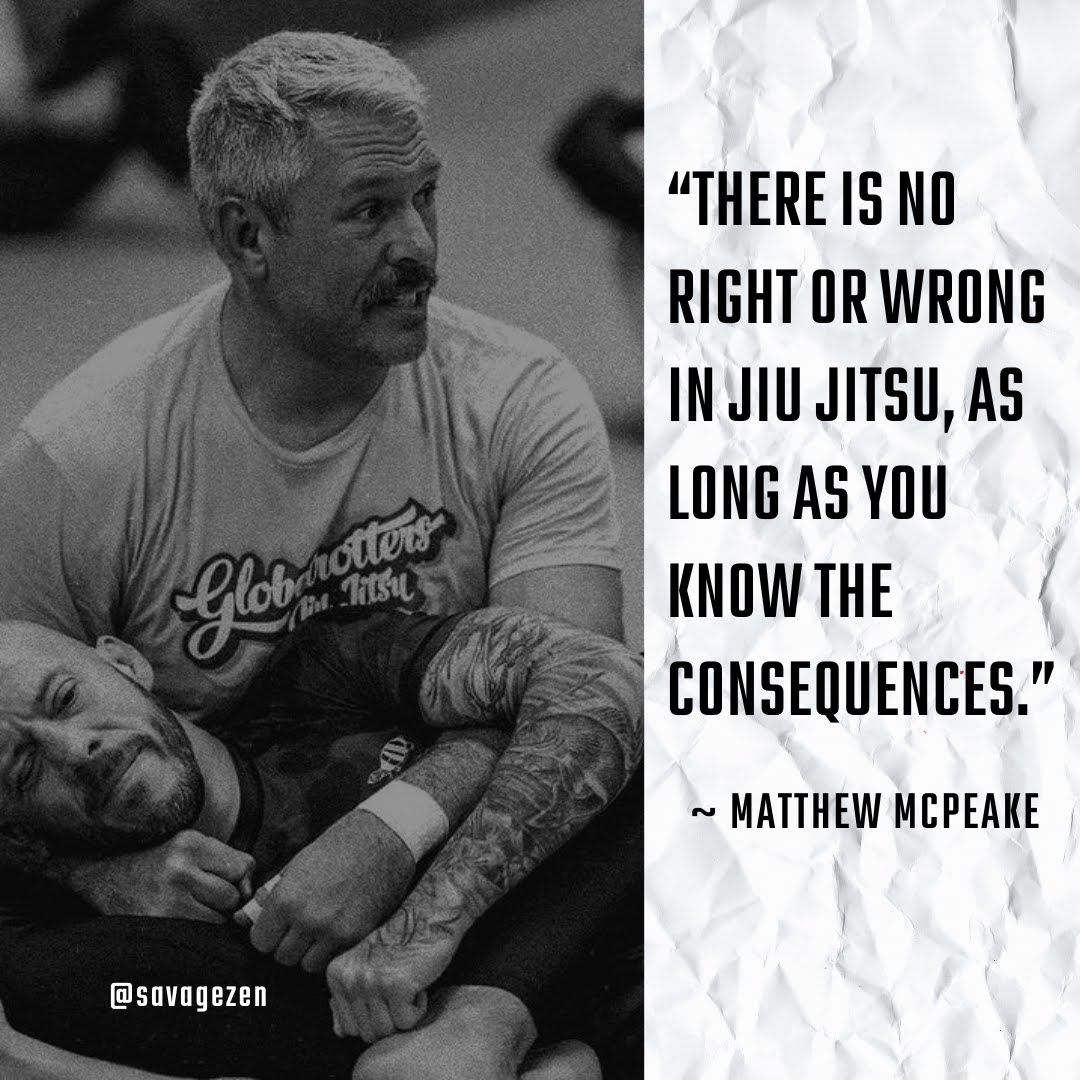Grappling - Sport, Street, and Art
'Think street, train sport, practice art.' ~ Chris Haueter
Austin Haedicke
1296 Words | Read Time: 5 Minutes, 53 Seconds
2024-08-02 06:01 -0700
My most popular Instagram / YouTube series is “BJJ Lies.” Of course, there is some truth in every lie. The second most popular video in that series is that “BJJ Doesn’t Work in the Streets.” We’ll come back to number one in a minute.
Chris Haueter has long since won my heart with the “Golden Rules of Grappling (1):”
- Be the guy on top.
- When on top, stay on top.
- When on bottom, have a guard you shall not pass.
- Never forget Rule 1 — easily forgotten due to the seductive and rewarding nature of guard.
Recently, I saw a meme with a quote from Chris saying “think street, train sport, and practice art.” I don’t have a source, but the point is still very well received. Chris has made the case for “sport” jiu jitsu before by emphasizing that to improve we must train. In order to train we must have rules and limits so that we don’t kill or maim each other.
Ever since Bruce Lee and the golden era of martial arts cinema from the 1960s through the 1980s, the number one lie in all of martial arts, which became the bedrock sales pitch of BJJ, is that technique conquers all.
Think Street:
Real violence doesn’t care what martial art you practice (thanks Coach B!). It cares even less about petty online quibbles about such. It is, in fact, quite crude and simple — literally the most brutally effective implements you can imagine (and most you don’t want to).
If you don’t know what Tim Kennedy means when he says “make soup”, you’ve got some homework to do.
Throughout my grappling career I’ve always been grateful for the “random gym bro” off the street or other unruly juggernaut that stumbles into our gym. Why? Who do you think is going to be starting shit “on the streets?” Without a weapon (which is an entirely different discussion), it almost certainly won’t be a meek 130 lb. string-bean.
I’m old(er) and (usually) tired now, so I can’t be the “mat enforcer” all the time; but occasionally it is a good reminder and usually inspires me to bring a few boxing mitts to a Friday practice.
In fact, when I got my brown belt, I wanted to “start over at the beginning” and tune up every aspect of my jiu jitsu. Even before basic armbars and scissor sweeps, I trained with Tony Blauer virtually for several months to re-root in the most rudimentary and practical “defense” application.
There are innumerable bogus and fraudulent “self defense experts” online. There are endless debates about groin strikes and eye gouges. There are several ironies here. I’ve never met a legitimate “self defense” coach who hasn’t also trained in some sort of “sport fighting” — MMA, BJJ, Muay Thai, Boxing, Judo, Wrestling, etc.
Additionally, if one can learn to fight “with rules”, they can certainly learn to remove those rules as well (see below). Real violence doesn’t give a damn about whether wrestling is better than karate any more than magic chi powers can stop bullets or punches.
Train Sport:
Another great line of guidance from Coach Blauer is to:
Be careful what you practice, you might get really good at the wrong thing.
To the “street” folks credit, preparing for military / LEO defensive tactics, without ROL violence, or even MMA, is a separate skill set from “pure grappling.”
However, it’s foolish to think that there isn’t anything to learn from “sport fighting” or any practical application therein. Of course, anyone with two brain cells to rub together isn’t going to berimbolo on concrete. That’s not the point. The point is, do you want to be double-legged or hip-thrown by an Olympic wrestler or judoka on the same slab of concrete?
What this means is that time (training) under pressure is more productive than abstract classroom speculation. Martial arts without sparring are just role playing.
A similar nonsensical debate exists between gi and nogi jiu jitsu. The entire point of a gi is to emulate “training clothes” that don’t rip and tear every training session. I once had a trial class guy tell me “a gi isn’t practical for the street” as he donned a heavy leather jacket of a collared shirt.
Spoiler alert, you can absolutely be collar choked in a t-shirt. I have implemented several useful t-shirt / belt restraints in our defensive tactics classes; but remember, “lapel guards are stupid and impractical”, right?
We owe it to ourselves and each other to value and learn from each other. At the highest levels of grappling it matters very little how you brand yourself (e.g. American vs. Brazilian vs. Japanese “jiu jitsu”) because everyone is training everything (judo, wrestling, sambo, even sumo).
Practice Art:
Like all adolescents, jiu jitsu is at an identity crisis. Conservatives in the community want to maintain an allure and mystique akin to “traditional martial arts” — the “do” of “ju-do.” At the same time, the ego — often wrongly vilified and admonished — of those same people wants to garner the respect of (Olympic / professional) sports (e.g. wrestling, judo, MMA).
Meanwhile the “liberal” variety of grapplers — perhaps haling from Eddie Bravo or Greg Souders lineages — seem to be grasping a vapors that only form palpable condensation at the “fundamentals” of grappling — so called “concepts” and their derived “principles.”
One of the most potent things I heard recently is that “there is no right or wrong in jiu jitsu, as long as you know the consequences.” This might as well be true in all of life.
Another oft touted BJJ lie is that “it makes you a better person.” Like “the force” in Star Wars, it is simply (a) power. Power doesn’t purify character, it simply reveals and distills it. As Frank Herbert mused:
“Power attracts pathological personalities. It is not that power corrupts but that it is magnetic to the corruptible.”
Chat GPT (4o) told me that the purpose of art is:
- aesthetic value,
- emotional expression,
- intellectual stimulation,
- cultural and historical significance, and
- social and political commentary.
On the last point, thanks to “social” media, there’s no shortage of people chiming in on various personal, social, and other topics — as is their right to use their platform how they choose (see above on “consequences”). Similarly, from a cultural perspective, see the above identity crisis.
As a cheap cop-out for “aesthetics” I’ll simply refer you back to the judo gif above and, if you must, watch some tango dancing clips and you’ll get the idea. The intellectual component is also pretty clear. Whilst it may be a misnomer that “technique conquers all”; strategy, tactics, and techniques are as relevant in grappling as they are in chess.
Regarding emotional expression, let me tell you, all manner of folks have come into the gyms I’ve trained at and espoused up-and-down how “chill and relaxed” they are… until you squeeze the fuck out of their neck; or perhaps attempt to disassemble their knee or elbow.
Now we’ve revealed a transition from ego to emotion to character for which “pressure” is a segue. Perhaps that is what Carlos Machado really meant by saying “the ground is my ocean…” Aside from the obvious metaphors of choking, strangling, swimming, and drowning, I can’t imagine more “pressure” than the later. For what it’s worth drowning is actually my biggest fear.
“Expose yourself to your deepest fear; after that… you are free.”
~ Jim Morrison
Perhaps, then, art has little to do with time or truth, but is simply the freedom to express effort.
Disclaimer: I receive a small commission for links on this site.
SavageZen Jiu Jitsu is a reader-supported publication. To receive new posts and support my work, consider becoming a free or paid subscriber.



